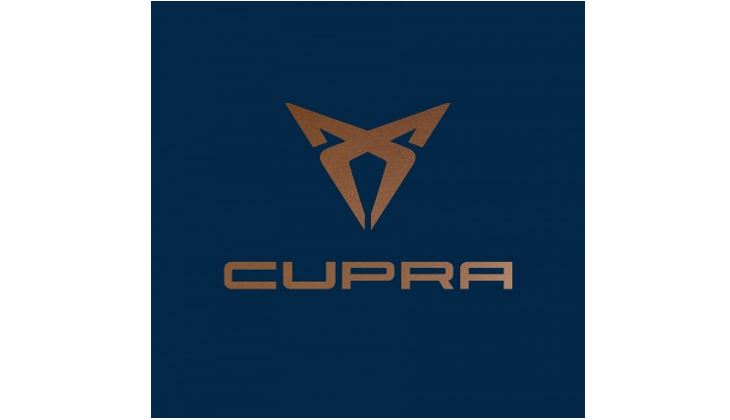Advertisement feature from CUPRA
Starting with a blank canvas and the R&D backing of the Volkswagen Group has given the fledgling brand many distinct advantages. National fleet manager Justin Costello explains.
 With a clear-eyed vision, CUPRA has set out its stall to win the hearts of drivers and the minds of fleet decision-makers. The brand’s key characteristics – styling, performance, equipment levels and pricing – present a compelling proposition to the company car market, with the added bonus of the R&D budget and engineering brilliance of the Volkswagen Group behind it.
With a clear-eyed vision, CUPRA has set out its stall to win the hearts of drivers and the minds of fleet decision-makers. The brand’s key characteristics – styling, performance, equipment levels and pricing – present a compelling proposition to the company car market, with the added bonus of the R&D budget and engineering brilliance of the Volkswagen Group behind it.
CUPRA’s challenge is not its vehicles, which already bask in the glory from winning a hatful of awards, but its awareness.
During one of the most disruptive periods in automotive history, when fleet decision-makers’ bandwidth has been filled with Covid-19 lockdowns, the race for electrification and delivery delays due to acute supply shortages, securing the attention of fleets and company car drivers has never been more difficult.
Confronted by these potential barriers, CUPRA’s fleet team has pursued a clear strategy.
“We try to keep things simple, avoiding jargon and buzzwords,” says Justin Costello, CUPRA national fleet manager. “CUPRA is a fresh and stylish alternative to traditional premium brands.”
“We have drivers migrating from traditional premium as well as volume and niche brands, attracted by the style and individuality, performance and efficiency of our cars”
For company car drivers uninspired by the same old makes and models on choice lists, CUPRA has arrived like a breath of fresh air. Its dramatic styling and generous equipment levels have won their hearts, while its low-emission range of electric and plug-in hybrid powertrains has also won their minds by delivering wallet-friendly levels of benefit-in-kind (BIK) tax.
“We have drivers migrating from traditional premium as well as volume and niche brands, attracted by the style and individuality, performance and efficiency of our cars,” says Costello. “Drivers like cars that are new and fresh and stand out in the car park, and CUPRA has come along at the right time with the right specifications and the right styling to do that for them.
“Our conversion rates, once someone has driven the car, are exceptionally high. But, being a new brand, it’s getting people to that point that is our challenge.”
The CUPRA Experience has helped massively with this. It’s an extended five-day test drive programme that allows drivers to understand exactly how a car can fit into their entire life, not simply the commute and business journeys, but weekends and evenings, too.
Allied to this is, CUPRA’s Virtual Showroom has both real people and CUPRA models at the other end of the video line – think a Zoom or Teams call into the heart of meticulously well-informed dealership that has excellent knowledge of both business and company car driver requirements. Drivers book a bespoke B2B experience by selecting CUPRA for Business when they make an appointment and then a product expert will show them around the car, guided by the customer to the areas that really matter to the individual driver, such as rear seat legroom, boot space or the infotainment system.
“It’s not a pre-recorded video, so the customer can focus on a particular part of the car, with a dedicated person there answering their questions live. Drivers can use it before they order a car to decide whether it is right for them, and after they have taken delivery if any new questions pop up,” says Costello. “Hopefully, it demonstrates that we’re willing to do things slightly differently.”
“The CUPRA Leon PHEV estate has proved really popular with job-need fleets, while the battery-electric CUPRA Born has been phenomenally successful since we started deliveries in April.”
A doubling of CUPRA’s corporate customer base in the past year indicates that the test drive and virtual showroom programmes are winning over fleets and drivers.
“In the fleet world, we have had a really strong take-up of both PHEV (plug-in hybrid electric vehicle) and EV (electric vehicle),” says Costello. “The CUPRA Leon PHEV estate has proved really popular with job-need fleets, while the battery-electric CUPRA Born has been phenomenally successful since we started deliveries in April.”
Blessed with pipeline stock at launch, CUPRA has been able to maintain lead times of six-to-nine months for the Born, to the point where the manufacturer has been able to support leasing companies whose clients have wanted to early terminate diesel cars in order to switch drivers into lower emission, lower tax alternatives.
Add into the mix a solution to make it easy for drivers to install a charge point at home, and even an advantageous domestic energy tariff with Octopus, and all the ingredients are in place to boost the uptake of battery electric models.
CUPRA’s sales are currently running 50:50 between Born and PHEV in fleet and Costello forecasts that this will end up 80:20 in favour of pure electric as two key new models arrive in the next couple of years – the Tavascan, a large, electric SUV promising 300 miles of range, slated for 2024, and a smaller, supermini-sized EV (the concept is called Urban Rebel) which looks a sure-fire hit for the booming salary sacrifice market. These will be joined by the Terramar, a PHEV SUV, due in late 2024.
Sharing model plans for the next three years, driving up brand awareness, and concentrating almost exclusively on the stable and profitable corporate and retail markets, are all part of a carefully planned strategy to reinforce market confidence in CUPRA.
“We have been really open as a brand about where we are going in the next three-to-five years, so, rather than showing leasing companies the next product that’s coming in three months, we have shown them the new models coming in 2024 and 2025, and that has been really useful for them to see where this brand is going,” says Costello.
The result is impressively high residual values, which, combined with competitive list prices and generous specifications, have secured CUPRA some of the lowest total costs of ownership (TCOs) in its market sectors.
TCO is now the determining factor of most fleet choice lists, with the rapid transition to alternatively-fuelled vehicles obliging fleet decision-makers and finance directors to take the tax benefits and fuel savings of running ultra-low and zero emission vehicles into account when determining company car bands or grades, rather than simply relying on list price or lease rental figures.
“With our affordable list prices and very strong residual values, TCO always works well for us; CUPRA is always in a podium position,” says Costello.
“For most employers, company cars are still a massive retention tool, so we want to make it as easy as possible for them to do business with us, while offering their drivers a range of cars with style, performance and the latest technology. CUPRA is an aspirational product that drivers really enjoy which delivers real value to businesses as well.”
















Login to comment
Comments
No comments have been made yet.